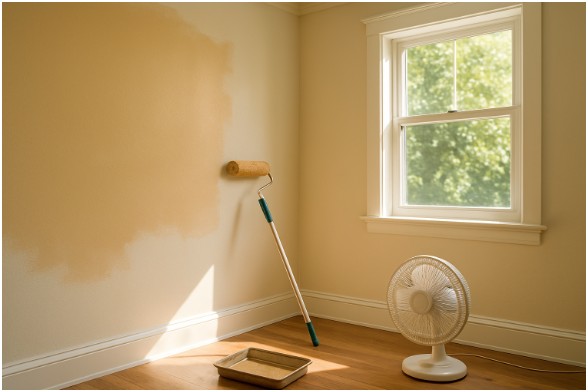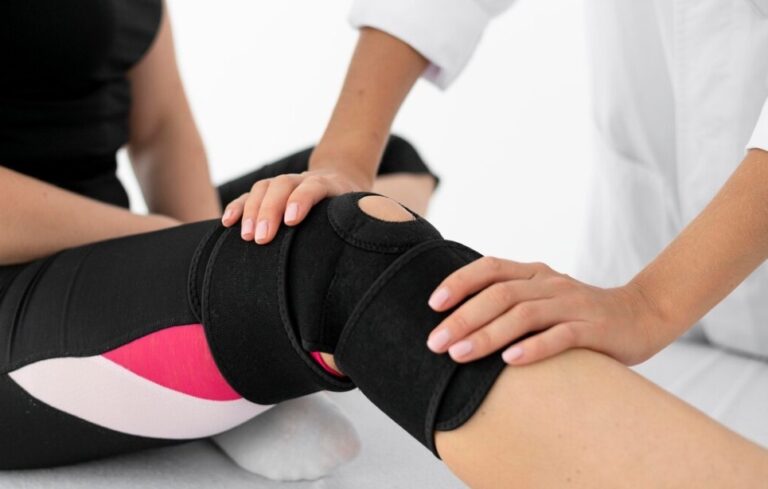I’ll admit it — I’m not the most patient person when it comes to home projects. A few years ago, I decided to repaint my living room one weekend.
I imagined myself relaxing Sunday night with a cup of tea, admiring my fresh, chic walls. Instead? I spent hours waving a fan and praying the paint would dry before my cat decided to test the wall with his tail.
That’s when I went down the rabbit hole of learning how to make paint dry fast — not just from trial and error, but from understanding what really affects drying time.
Whether you’re working with acrylics, oils, or regular house paint, I’ve got practical, tested tips to help you speed up the process (without ruining your finish).
Why Does Paint Take So Long to Dry?

Before we rush to fix it, it helps to know what’s happening. Paint drying isn’t just about time — it’s about evaporation and oxidation.
Acrylic and latex paints dry as water evaporates, while oil paints cure through oxidation — a chemical reaction with oxygen that takes longer. So, anything that slows down evaporation or oxidation (like humidity or thick layers) will keep your paint tacky for ages.
Once I understood this, speeding up the process became less about hacks and more about creating the right environment.
How Can You Control the Environment to Make Paint Dry Fast?
If there’s one thing I’ve learned, it’s that the room you paint in is just as important as the paint itself.
Increase airflow.
I always open the windows wide or set up a fan. Circulating air helps move moisture and solvents away from the surface, preventing a vapor barrier that can trap wetness. Ceiling fans or even a small desk fan can make a noticeable difference.
Raise the temperature.
A warm room speeds up drying by helping water or solvents evaporate faster. I usually turn up the thermostat a bit or use a space heater at a safe distance. Just don’t overdo it — too much heat can cause bubbling or cracking.
Reduce humidity.
If you live in a humid area (like me during monsoon season), run a dehumidifier. Paint simply won’t dry well when the air is already full of moisture. Lowering humidity helps paint dry evenly and faster.
Can You Use a Hairdryer to Make Paint Dry Faster?
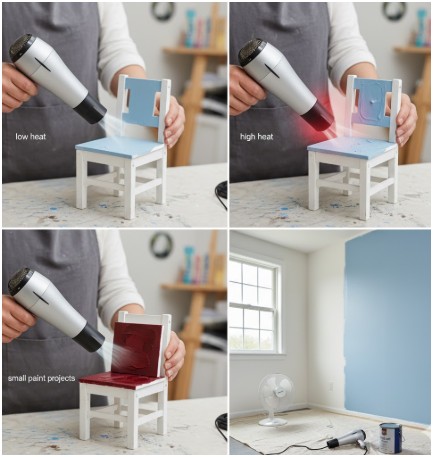
Yes — but with caution. A hairdryer can be your best friend for small paint projects, especially with acrylics.
When I paint small furniture pieces, I use the low-heat setting and hold the dryer about six inches away from the surface.
This keeps the air moving without overheating the paint. If you hold it too close or use high heat, you risk blistering the paint or creating an uneven texture.
For bigger walls or oil-based paints, skip the hairdryer and focus on improving ventilation and temperature instead.
What Painting Techniques Help Paint Dry Faster?
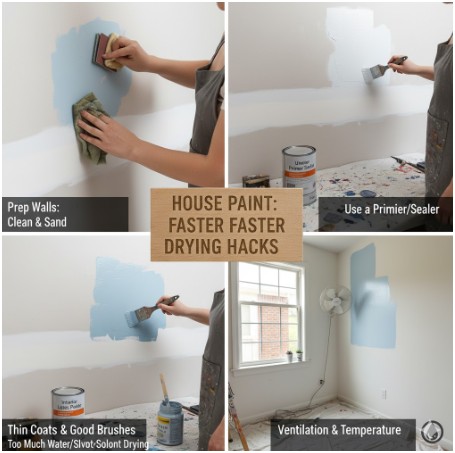
The way you apply paint can make or break your drying time. Here’s what I’ve learned from years of painting (and a few regretful thick coats):
Go thin. Always.
Thick coats look tempting because they seem to cover faster — but they take forever to dry and are prone to streaks. Multiple thin layers dry faster and look smoother.
Don’t over-thin your paint.
Yes, you can add a little water or solvent to make paint easier to apply, but too much will extend drying time. Oil paints especially hate extra oil — it slows down oxidation.
Use fast-drying mediums.
If you’re using oil paint, mixing in an alkyd medium like Liquin or Galkyd can make a night-and-day difference. I’ve seen paint dry in less than a day using these.
Do Certain Paints and Pigments Dry Faster Than Others?
Absolutely! Some paints are naturally designed to dry quicker, and choosing the right one can save hours (or days).
Faster-drying pigments.
Earth tones like Burnt Umber, Raw Sienna, and Yellow Ochre dry much faster than colors like Titanium White or Cadmium Red. So, if you’re in a rush, plan your color palette strategically.
Oil type matters.
Linseed oil dries faster than safflower or poppy oil. When shopping for oil paints, check the label — it often mentions which oil base it uses.
Acrylic underpainting.
If you’re layering oils, start with an acrylic underpainting. Acrylics dry in minutes and create a solid foundation for oils to sit on. It’s one of my favorite time-saving tricks when working on detailed projects.
What Surfaces Help Paint Dry Fast?
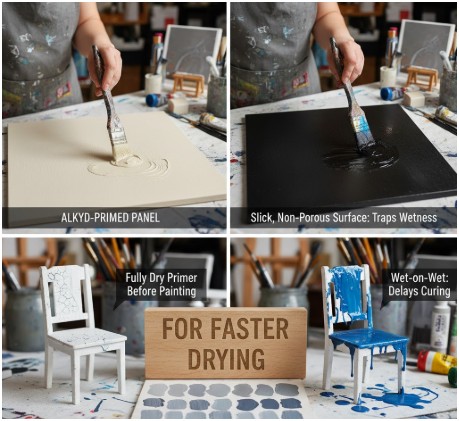
I once tried painting an unprimed, glossy surface — and it was a disaster. The paint took days to dry because it couldn’t grip the surface properly. Lesson learned: the surface matters as much as the paint.
For faster drying, use absorbent surfaces like alkyd-primed panels or chalk gesso. These pull moisture out of the paint and help it cure faster. Avoid overly slick or non-porous surfaces that trap wetness.
And if you’re painting furniture or walls, make sure the primer you use is fully dry before applying paint. Layering wet on wet just delays everything.
How to Make Paint Dry Fast Step-by-Step
When I want my paint to dry fast and even, here’s my foolproof process:
- Prep your space. Open windows, set up fans, and, if needed, use a dehumidifier.
- Warm up the room. Keep it comfortably warm — around 70–80°F works well.
- Apply thin coats. Use long, even strokes and resist the urge to overload your brush or roller.
- Wait between layers. Let each coat dry fully before applying the next one. Patience pays off.
- Use drying mediums (if applicable). Especially for oil paints — they’re game changers.
Each of these steps speeds up drying while keeping your finish professional and smooth.
FAQs About How to Make Paint Dry Fast
Q1: Can I use a fan to dry paint faster?
Yes! A fan is one of the simplest and safest tools to speed up paint drying. Just make sure the air circulates around the room, not directly onto the surface — strong air blasts can cause uneven drying or dust buildup.
Q2: Does sunlight help paint dry faster?
In moderation, yes. Natural warmth and light can help, but direct sun on fresh paint can lead to cracking. Try indirect sunlight or warm daylight through a window instead.
Q3: How long should I wait between coats if I want faster drying?
It depends on the paint type — acrylics usually need 1–2 hours, latex about 4 hours, and oils 24 hours or more. Always touch-test in a small corner before reapplying.
Q4: Will adding water make my paint dry faster?
Not necessarily. A tiny bit can help thin paint for smooth application, but too much water or solvent can slow evaporation and weaken your finish.
Dry Like a Pro — and Keep Your Sanity
If you’ve ever stood in front of a freshly painted wall, impatiently waiting for it to dry (maybe with a hairdryer in one hand and a fan in the other), trust me — you’re not alone.
Learning how to make paint dry fast is all about balance: managing airflow, heat, humidity, and paint thickness without cutting corners. Once you master those, painting becomes less about waiting and more about creating.
And the next time you tackle a room makeover or an art project, you’ll be sipping that cup of tea in front of your dry, flawless wall — not waving a fan around at midnight.





